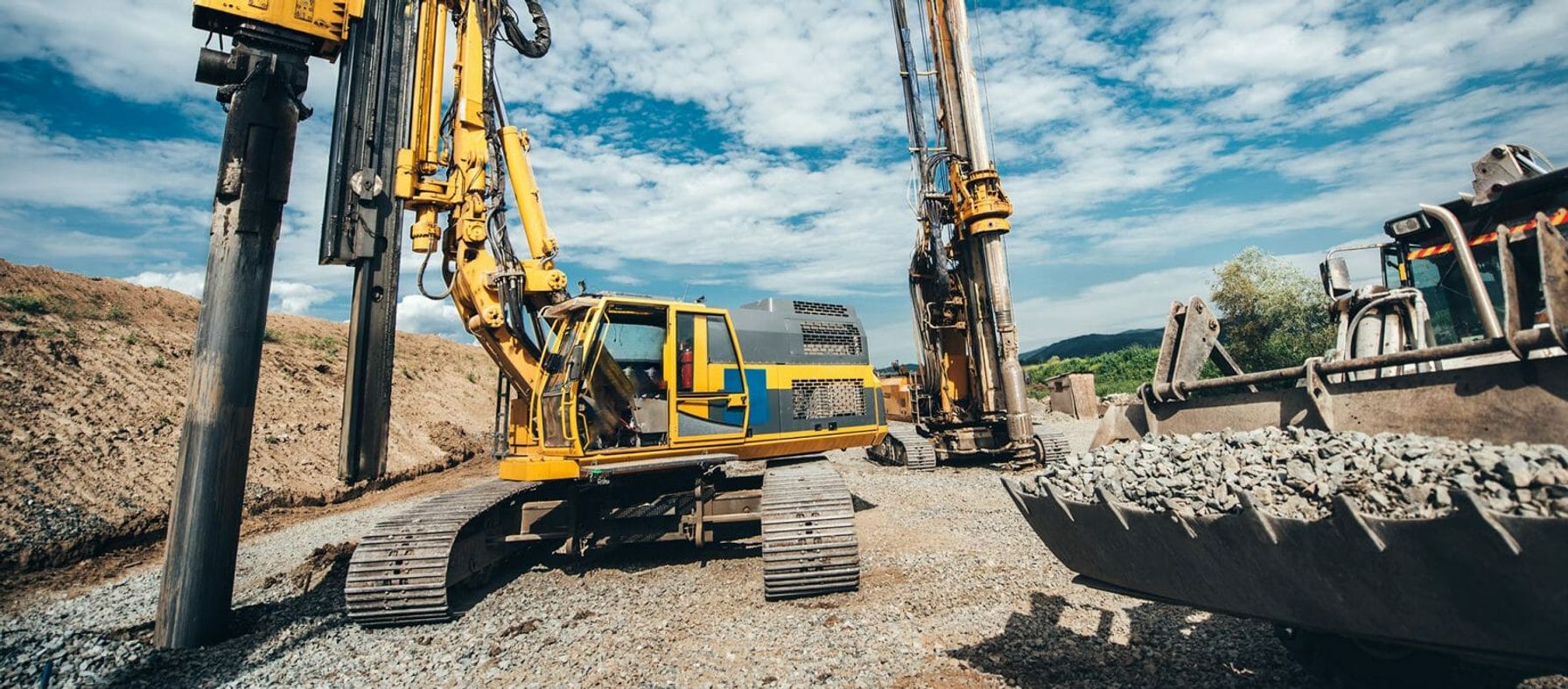The Ultimate Guide To Geotheta
The Ultimate Guide To Geotheta
Blog Article
Some Ideas on Geotheta You Should Know
Table of ContentsThe Main Principles Of Geotheta Not known Facts About GeothetaGeotheta Fundamentals ExplainedLittle Known Facts About Geotheta.
They collaborate with civil engineers, structural designers, engineers, and other professionals to incorporate geotechnical factors to consider right into the general project layout and building procedure. This requires effective synergy, control, and interaction to guarantee that the geotechnical elements align with the job goals and fulfill governing demands.Mining & Materials Engineering: Concepts of boring, infiltration rates, and factors influencing the choice of exploration technique. Characteristics of dynamites, firing systems and blast patterns. Blasting strategies in surface and underground operations. Special blowing up techniques at excavation borders. Vibration and sound control. Mechanical and constant approaches to fragmentation, consisting of longwall shearing and fullface boring.
Integrated analysis of fragmentation and comminution operations. Supplied by: Mining & Materials Engineering.
Excitement About Geotheta
Bachelor's degree programs in civil, geotechnical, geological, and environmental engineering typically last four years and include basic education training courses in English, social science, and the liberal arts, in addition to programs in sophisticated mathematics, architectural geology, and fluid mineralogy. (https://www.4shared.com/u/w_sNL5Rc/ianhammond2191.html)
Geotechnical engineering involves the assessment of the dirt and rock conditions at a certain site, and their ramifications for the development of that site. As many structures rely upon the ground for support, it lacks surprise that an in-depth understanding of the ground problems, and the suitability of structure systems, are essential to the long-term stability and performance of the building or structure.
Being experts in the examination of geological formations and ground behaviour, geotechnical designers carry out clinical investigations and testing to understand the influence these geological developments may have on the design and building of structure, civil and infrastructure projects. This expertise is important for the style and building and construction of structures, roadways, passages, dams, bridges, and water system and sewer system.
The geotechnical team at Douglas Partners regularly talk to architects, design designers, designers, and home builders to make referrals on layout and advancement proposals to guarantee that the built frameworks are accordingly created for the ground problems. The layout of footing systems needs to consider the weight of the framework, the capability of the ground to support that weight with each other with activity resistances and reliable building and construction.
Some Ideas on Geotheta You Should Know
This job is substantially streamlined by the use of our Douglas Map geospatial system which makes this info readily obtainable in a simple to make use of web internet browser interface. A geotechnical designer will route the boring of boreholes and test pits to gather dirt and other examples, and also evaluate surface attributes and ground exposures to create a geotechnical model of the subsurface conditions.
Relying on the project kind and ground problems ran into, laboratory testing might among other points evaluate toughness, compressibility, reactivity and/or permeability of dirt and rock samples. After this information is collected and collected, the outcomes are utilized for a geotechnical version of the site, which is normally provided as areas across the website.

A geotechnical examination naturally can only examine the ground problems at the locations drilled or excavated. Natural variants in dirt and rock problems can take place throughout a site and between test locations. It is consequently great method that the geotechnical designer be retained throughout building and construction of the task to offer on-site confirmation that the ground problems encountered follow the assumptions and advice provided in the geotechnical examination record.
Rumored Buzz on Geotheta
Geotechnical engineers utilize their thorough understanding of soil and rock to analyze threat and fix problems on varied framework projectsGeotechnical design is a specialist branch of civil engineering which checks out the behavior of earth products and the application of dirt and rock auto mechanics. Tailings Engineer. As a geotechnical engineer, you will assess the physical, mechanical and chemical properties of soil and rock in order to design structures, maintaining structures and earthworks
Geotechnical design is carefully linked to and overlaps with, both engineering geology and ground engineering - https://geotheta.weebly.com/. It's feasible to be experts in geotechnics or benefit a geotechnical company however be called an engineering geologist or a ground designer. As a geotechnical engineer, you'll need to: build and keep relationships with customers and other experts associated with the site, throughout each projectmaintain safety and security requirements on website bear in mind cost effects when you make recommendationsstudy geological maps and airborne photographs from a variety of sources and from different time periodsexamine construction intends to see just how viable they are based on your understanding of the siteinvestigate risks or geological threats for the sitesearch for ecologically sensitive functions, such as landfill start to develop valid and interpretive ground modelsplan area investigationsdrill and analyse examples of bedrock, helpful resources soil, groundwater and added products supervise various other specialists on sitesolve technical concerns as they develop, such as unforeseen structures at drill sitesmonitor problems throughout and after building to make certain frameworks are stable in the brief and long termadding information gathered on website to your first researchcreating geotechnical computations, illustrations, and two or three-dimensional computer system models analyzing the datamaking recommendations regarding the proposed usage of the website

Report this page